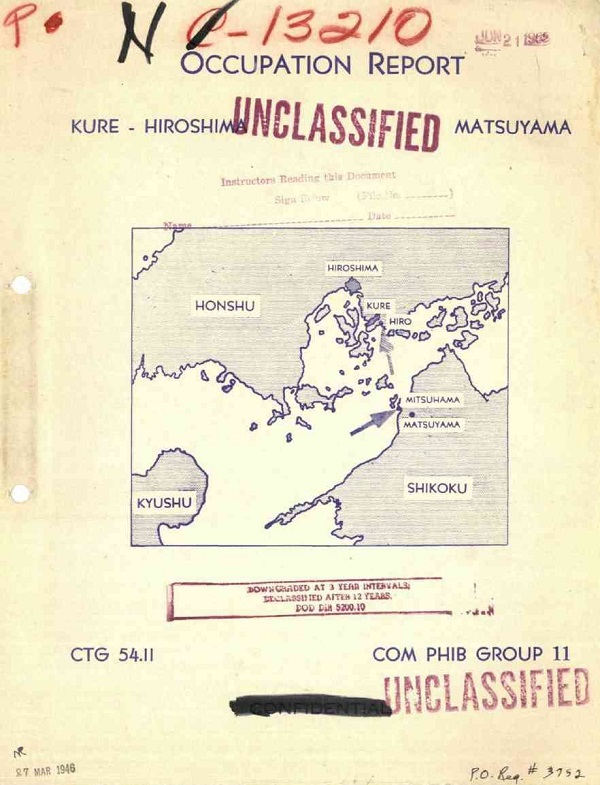
World War II: Occupation of Japan Plans – Operation BLACKLIST
$19.50
Description
Operation BLACKLIST: Japan and Korea Occupation, 1945-1946
Detailed Timeline of Events (September 1945 – June 1946)
This timeline focuses on the key events related to the occupation of Japan and Korea as described in the “Operation BLACKLIST” documents.
August 1945
- August 8: Tentative troop list by type units for “BLACKLIST” Operations is created, allocating units available in the Western Pacific for August and September.
- August 12: Staff study “Baker-Sixty” is completed. Derived from the Basic Outline Plan for “BLACKLIST,” it outlines an initial airborne operation to occupy critical areas of Tokyo if conditions are favorable.
- Mid-August: Japan announces her acceptance of the Potsdam Proclamation, leading to the resignation of the Suzuki government.
- Late August: The Higashi-Kuni cabinet forms in Japan. Japanese emissaries arrive in Manila to discuss surrender terms.
September 1945
- Early September: Preparations are underway for the surrender and occupation of Japan, including organizational changes within Fleet Air Wing ONE.
- September 2: The formal surrender of the Empire of Japan takes place.
- September: The Supreme Commander for the Allied Powers (SCAP) issues Occupation Instructions No. 1, outlining initial directives.
- September: The Supreme Commander’s powers are restated. Ultimate objectives of the occupation and cautions for occupation forces are defined.
- September: Abolition of Japanese Imperial General Headquarters occurs.
- September 5: Commander Amphibious Group Eleven’s report on the occupation of the Kure-Hiroshima and Matsuyama areas begins, covering naval phases of amphibious operations, troop landing, and movement.
- September – October: Summation No. 1 reports on non-military activities in Japan and Korea.
- September: Third Fleet units enter Sagami Wan.
- September: Airborne landings occur at Atsugi Airdrome.
- September: Amphibious landings by the Fleet Landing Force take place.
- September – October: Demilitarization operations of Task Unit 35.7.1 and 35.7.2 are conducted in Central Honshu.
- September – October: Evacuation of Prisoners of War from Central and Northern Honshu commences.
- September – October: Amphibious and ground operations continue in the Tokyo Bay Area.
- September – October: Preparatory operations for the occupation of Hokkaido and North Honshu are undertaken.
- September – October: Naval occupation of Hokkaido and North Honshu begins.
- September – October: Occupation of Hokkaido and North Honshu by U.S. Army units commences, with coordination between TF 56 and the U.S. Army.
- September – October: Preparatory operations and organization for the occupation of Kyushu, Shikoku, and Southern Honshu are established.
- September – October: Assignments of shipping for Southern Japan are made.
- September – October: Evacuation of Prisoners of War from Southern Japan begins.
- September – October: Occupation of Kyushu, Shikoku, and Southern Honshu by SIXTH Army Units commences.
- September – October: Initial mine force operations begin.
- September – October: Occupation of Jinsen (Incheon) in Korea takes place.
- September – October: Movement to Fusan (Busan) and other operations in Korea occur as part of the occupation.
- Late September/Early October: The final progress report of the demobilization of the Japanese armed forces is compiled, detailing enemy order of battle, troop dispositions, demobilization and disarmament schedules, status of surrendered armament, distribution of Japanese police, and Japanese airfields.
October 1945
- October 9: Typhoon “Louise” hits Okinawa.
- October 31: Commander Amphibious Group Eleven’s action report on the occupation of the Kure-Hiroshima and Matsuyama areas concludes.
February – June 1946
- February – June: The 24th Infantry Division is engaged in the occupation of Japan.
- February 11, 1946: The US Pacific Fleet issues a report on the surrender and occupation of Japan and Korea, summarizing events since the surrender.
- Throughout the period: Surrender and development of outlying Japanese-held islands in the Pacific Ocean Areas continue.
- Throughout the period: Liberation of Japanese-held China proceeds, including the evacuation of POWs from Manchuria and China, landings of Marine Divisions, and movement of Chinese armies.
- Throughout the period: Search for missing American or Allied personnel continues.
Cast of Characters with Brief Bios
- Supreme Commander of the Allied Powers (SCAP): The overall commander responsible for the occupation of Japan and the implementation of surrender terms. This position was held by General Douglas MacArthur during this period.
- Bio: A five-star general in the U.S. Army, Douglas MacArthur had a distinguished military career, including service in World War I, as Chief of Staff of the Army, and as a prominent commander in the Pacific Theater during World War II. He was appointed SCAP after the Japanese surrender and wielded significant authority over Japan’s political, economic, and social restructuring.
- Commander-in-Chief, U.S. Army Forces Pacific: The commander responsible for the U.S. Army forces involved in Operation BLACKLIST.
- Bio: This role was held by General Douglas MacArthur concurrently with his position as SCAP.
- Commander Amphibious Group Eleven: The naval officer responsible for the amphibious operations in the Kure-Hiroshima and Matsuyama areas.
- Bio: The specific individual is not named in the provided excerpts.
- Commander Amphibious Forces (Task Force 56): Involved in the occupation of Hokkaido and North Honshu.
- Bio: The specific individual is not named in the provided excerpts.
- Commanding General, SIXTH Army: Responsible for the occupation of Kyushu, Shikoku, and Southern Honshu.
- Bio: At the time of the occupation, the Commanding General of the Sixth Army was General Walter Krueger. He had a long and distinguished military career, primarily in staff and command positions.
- Commander THIRD Fleet: Units of the Third Fleet entered Sagami Wan as part of the initial occupation.
- Bio: The specific individual commanding the Third Fleet at this precise time is not explicitly stated in the excerpts. However, during much of the latter part of the Pacific War, the Third Fleet was commanded by Admiral William Halsey Jr.
- Fleet Landing Force: Naval personnel involved in amphibious landings in Central Honshu.
- Bio: This refers to a collective group of naval personnel rather than a specific individual.
- Task Unit 35.7.1 & Task Unit 35.7.2: Naval units involved in demilitarization operations in Central Honshu.
- Bio: These are organizational units, not specific individuals.
- Commander Fleet Air Wing ONE: The commander of the naval air wing who oversaw organizational changes during September 1945.
- Bio: The specific individual is not named in the provided excerpts.
- FLTLOSCAP & SCAJAP: Acronyms referring to naval organizations active during the occupation (Fleet Logistics Support Command, Pacific Fleet and Supreme Commander Allied Powers, Japan, respectively). They are not individual people.
- Suzuki: The Prime Minister of Japan who resigned after Japan accepted the Potsdam Proclamation.
- Bio: Kantarō Suzuki was a retired admiral in the Imperial Japanese Navy and served as Prime Minister of Japan from April to August 1945. He initially favored continuing the war but ultimately supported the decision to accept the Allied surrender terms.
- Higashi-Kuni: The individual who succeeded Suzuki as Prime Minister of Japan.
- Bio: Prince Naruhiko Higashikuni was a member of the Japanese imperial family and a career army officer. He became Prime Minister briefly after the surrender to oversee the initial stages of the occupation.
World War II: Occupation of Japan Plans
1,467 pages of documents concerning plans before the occupation of Japan to take place after the end of hostiles, and reports on the occupation of Japan, including maps and charts.
Reports include:
Action report on the occupation of Kure-Hiroshima and Matsuyama areas
Action report on the occupation of Kure-Hiroshima and Matsuyama areas, from the Commander Amphibious Group Eleven. This report covers the naval phases of the amphibious operations in connection with the mounting, movement, and landing of the Tenth Corps assigned to the occupation of the Kure-Hiroshima and Matasuyama areas of Japan, following the termination of hostilities. It covers the time period of 5 September 1945 to 31 October 1945. The report includes summary, preliminaries, list of directives, chronological record of events, and special comments and information.
Staff study [US Army Forces (Pacific)]: Operation “Baker-Sixty”.
An August 12, 1945 staff study derived from the Basic Outline Plan for “BLACKLIST” Operations, It constitutes the basis for directives to be issued for an initial contingent airborne operation to occupy critical portions of the Tokyo area, in case conditions exist on target date favorable for such airborne entrance.
Tentative troop list by type units for Blacklist operations.
An August 8, 1945 troop list by type unit, for “BLACKLIST” Operations. Contains an allocation of type units, adjusted to availability in the Western Pacific for the months of August and September 1945 for use as a guide in designation of troop units in event “BLACKLIST”‘ Operations become effective.
Final progress of demobilization of the Japanese armed forces.
Supreme Command of the Allied Powers’ final progress report of demobilization of the Japanese armed forces. This report records the accomplishments of the demobilization of the Japanese armed forces. Covers enemy order of battle, troop dispositions, schedule of demobilization and disarmament, status of surrendered armament, distribution of Japanese police, Japanese airfields.
Occupational history of the 24th Infantry Division for Feb-June 1946.
A Narrative of the activities and operations of the 24th Infantry Division engaged in the Occupation of Japan from February to June 1946.
Summation No. 1: Non-military activities in Japan and Korea for the months of September – October 1945.
A report on the non-military activities in Korea and Japan during 1945.
Operation BLACKLIST documents
Basic outline plans for Blacklist operations to occupy Japan proper and Korea after surrender or collapse. Covers air dropping of emergency supplies to POWs and Civilian Internees, base establishments, port and base development, airfield development, hospitalization, summary of construction materials requirements, amphibious and heavy cargo shipping requirements, and bulk petroleum storage.
This basic outline plan covers operations to occupy Japan Proper and Korea after surrender or collapse of the Japanese Government and Imperial High Command. This operation consists of a series of landings by United States Army and attached forces under the control of Commander-in-Chief, U.S. Army Forces Pacific, subsequent to sudden collapse or unconditional surrender of the Japanese Government and Imperial High Command. The objective was the occupation of critical areas in Japanese home islands and Korea, establishment of control over the armed forces of the enemy, the civilian population of occupied areas, and the imposition thereon of those prescribed terms of unconditional surrender requiring immediate military action. This document contains the following annexes: (4) Basic Logistic Plan, including Responsibilities for Logistics Support, Supply, Evacuation, Hospitalization, Transportation, Construction, and Shipping Designators; (6a) Signal Communications Plan; (5b) Digest of Assumed Terms of Surrender and Enforcement of Surrender Terms; (5c) Basic Plan for Establishment of Control of the Armed Forces and Military Resources of the Enemy, including Uniform Standards for Disarmament of Japanese Armed Forces and Procedures for Demobilization of Japanese Armed Forces Personnel; (5d) Basic Intelligence Plan; (5e) Estimate of the Enemy Situation with Respect to “Blacklist”; (5f) Basic Plan, Care, and Evacuation of Allied Prisoners of War (POWs) and Civilian Internees, including definitions of POW and Civilian Internee and the names, locations, numbers held, and nationalities held of POW encampments in Japan and Korea; and (5g) Summary of Provisions of CINCPAC Plan “Campus” Pertaining to Naval and Amphibious Phases, “Blacklist” Operations
Daily Summaries and G-2 estimate of enemy situation, July 1945.
Abstract Intelligence summaries for the Pacific forces for July of 1945
Report of surrender and occupation of Japan and Korea
Report of the surrender and occupation of Japan, US Pacific Fleet, 11 February 1946.
Topics include:
INTRODUCTION: General, Advance Planning and Organization, Preliminary Operations
THE SURRENDER AND OCCUPATION OF JAPANESE HOME ISLANDS:
The Occupation of Central Honshu: Preparations for Surrender and Occupation, Entry of THIRD Fleet Units into Sagami Wan, The Airborne Landings at Atsugi Airdrome, Amphibious Landings by Fleet Landing Force, Demilitarization Operations of Task Unit 35.7.2, Demilitarization Operations of TU 35.7.1, Summary of the Demilitarization Program in Japan, Evacuation of Prisoners of War from Central and Northern Honshu, Continuation of Amphibious and Ground Operations in the Tokyo Bay Area, The Supreme Commander’s Appraisal of Japan and Her War Potential, Organizational Changes of Fleet Air Wing ONE During September, Activities of FLTLOSCAP and SCAJAP, Status of Repatriation of Japanese Nationals.
Occupation of Hokkaido and North Honshu: Preparatory Operations, Naval Occupation, Occupation by Army Units, Coordination between TF 56 and the U.S. Army, Termination of Transfer of U.S. Naval Vessels to Russia
Occupation of Kyushu, Shikoku, and Southern Honshu: Preliminary Operations and Organizations, Assignments of Shipping for Southern Japan, Evacuation of Prisoners of War from Southern Japan, Occupation by SIXTH Army Units, Conditions in Southern Japan, Mine Force Operations: Magnitude of the task, Forces Available, Progress of the work, Losses
THE POLITICAL AND MILITARY BACKGROUND OF AND NEGOTIATIONS FOR THE SURRENDER AND OCCUPATION OF JAPAN.
Occupation Plans Prepared in Anticipation of the Surrender of Japan, The Atomic Bomb and the Soviet Union Enter the War Against Japan, Japan Announces Her Acceptance of the Potsdam Proclamation, Resignation of the Suzuki Government and Succession of the Higashi-Kuni Cabinet, The Arrival of Japanese Emissaries at Manila, The Formal Surrender of the Empire of Japan, Formation of a New Japanese Cabinet, Abolition of Japanese Imperial General Headquarters, The Supreme Commander’s Occupation Instructions No.1, Restatement of the Powers of the Supreme Commander, Ultimate Objectives of the Occupation, Cautions Imposed Upon the Occupation Forces
SHIPS PRESENT IN TOKYO BAY DURING THE SURRENDER CEREMONIES
THE SURRENDER AND OCCUPATION OF KOREA
The Situation Existing in, The Purpose and Objectives of the Occupation of Korea, Proposed Policy of Allied Military Government in Korea, Occupation of Jinsen, The Movement to Fusan, Other Operations in Korea
THE LIBERATION OF JAPANES-HELD CHINA.
The Evacuation of P.O.W.s from Manchuria and China, Evacuation of Allied Prisoners of War from Formosa – The Landing of the 1st Marine Division in the Tientsin-Chinwangtao Areas, The Landing of the 6th Marine Division at Tsingtao, The Lifting of the 70th Chinese Army from Ningpo-Chinhai to Kiirun, Formosa, Operations of TF 72, the Fast Carrier Force, The Landing of the 13th and 8th Chinese Armies at Chinwangtao and Tsingtao, Movement of the 52nd Chinese Army from Haiphong to Chinwangtao, The Landing of the New 6th Chinese Army at Chinwangtao, The British Pacific Fleet Subsequent to the Fall of Japan.
SURRENDER AND Development OF OUTLYING JAPNI1SE-HELD ISLANDS IN THE PACIFIC OCEAN AREAS.
The Surrender of Mille Establishes a Pattern, Surrender of Aka Shima and Tokashiki Shima, Surrender of Halmahera and Garrisons Remaining on Morotai, Surrender and Development of Iarcus Island, Surrender of the Palaus, Surrender of Tobi-Sonsorol-Merir, Surrender of Rota, Surrender of Pagan, Evacuation Policy in the Marianas Area, Surrender of Truk Atoll and Its Appurtenances, Surrender of Puluwat-Nomoi-Namoluk, Surrender and Development of Wake, Surrender and Occupation of the Bonins, Surrender of Aguijan, Surrender and Development of Jaluit, Surrender and Development of Yap, Surrender and Development of wotje, Surrender and Development of Maloelap, Surrender of the Ryukyu Islands, Search of Sorol, Eauripik, and Ifalik Islands, Surrender of Kusaie, Surrender and Development of Ponape, Surrender and Evacuation of Nauru, Surrender of Lamotrek, Surrender and Development of Woleai, Search of Taongi Atoll, Surrender of Ocean Island, Demilitarization of 0 Shima, Demilitarization of Nii Shima, Search for Missing American or Allied Personnel, Summary of Evacuations in the Marianas Area, Summary of Evacuations in the Marshalls-Gilberts Area.
TYPHOON “LOUISE”-THE 9 OCTOBER STORM AT OKINAWA.
The disc contains a text transcript of all recognizable text embedded into the graphic image of each page of each document, creating a searchable finding aid.
Text searches can be done across all files.
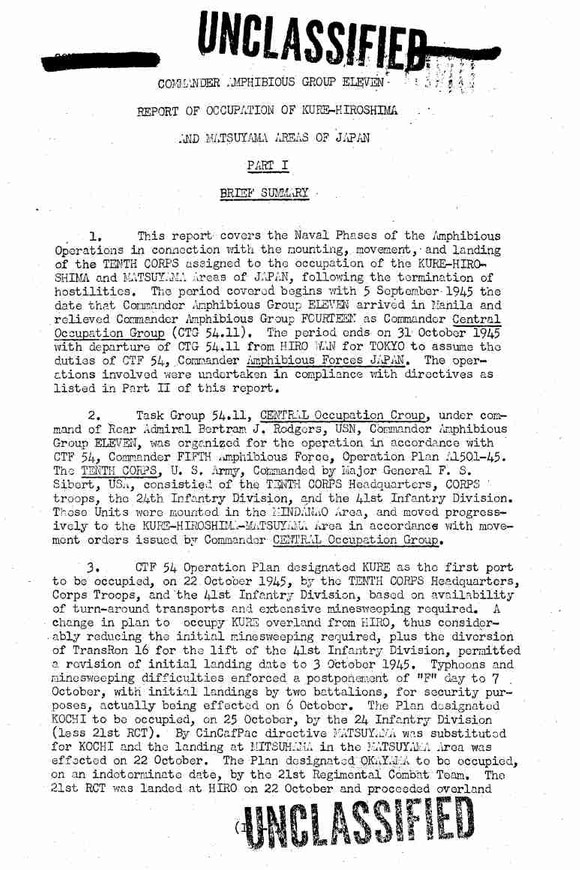


Related products
-


Operation POPEYE in the Vietnam War
$5.94 Add to Cart -
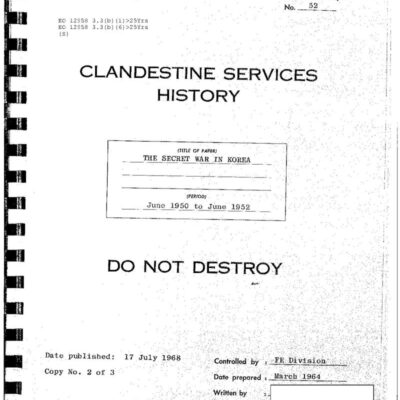
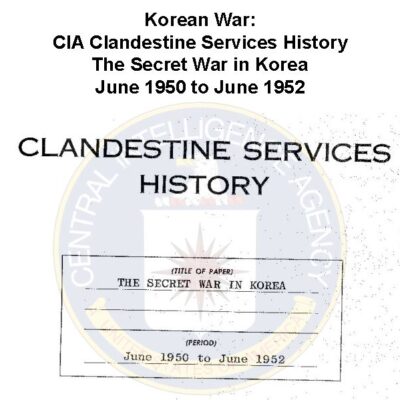
Korean War: CIA Covert Operations History – The Secret Conflict in Korea
$3.94 Add to Cart -
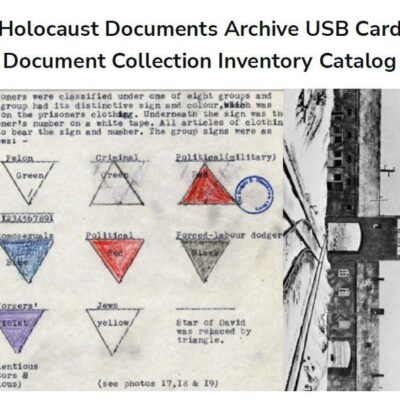
Holocaust Document Archive PDF file – Inventory Catalog of Document Collection
$3.94 Add to Cart -
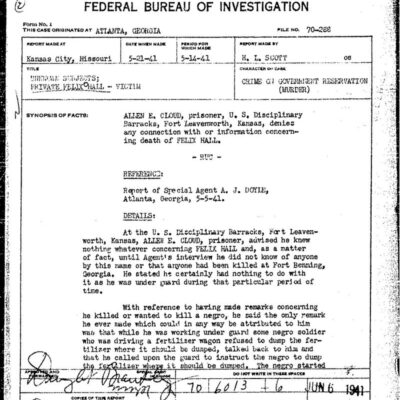

World War II: Felix Hall Lynching – FBI Files, Articles, Historical Records
$9.99 Add to Cart